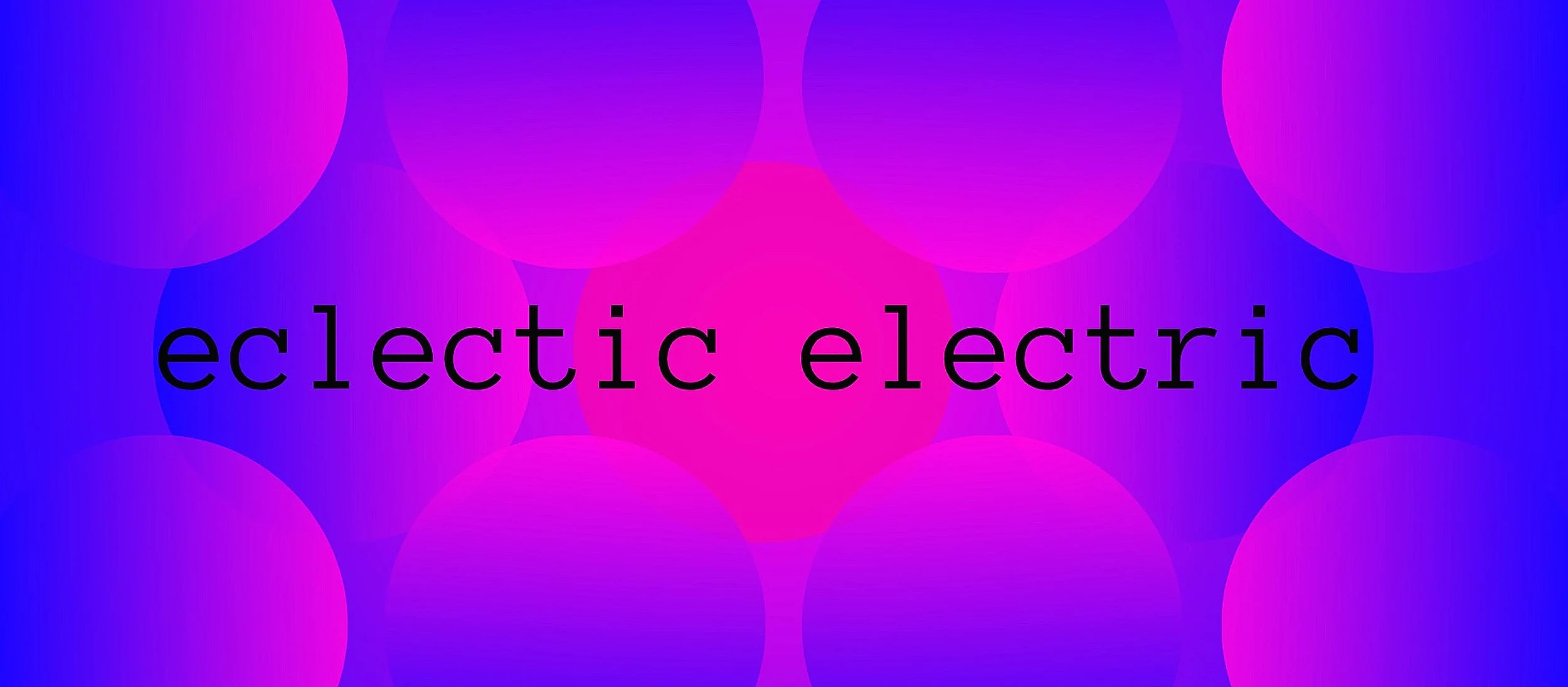Eclectic Electric
in this hybrid program, icarus Quartet dares to challenge the divide between man and machine…
As the name suggests, this set list has something for everyone. But in addition to appealing to many ears, it appeals to many venues – “Eclectic Electric” allows iQ to play music just as exciting, but with only ONE grand piano. This program of works commissioned by icarus Quartet features sampled lo-fi hip hop beats, a Dominican güira, and at one point eschews all of icarus’ acoustic instruments in exchange for two synthesizers, a drum machine, and a MIDI mallet keyboard as chamber music meets Electronic Dance Music.
explore the program
-
"The sky, paler than yesterday is about transformation and evolution. Patterns gradually unfold over time, forming a web of interlocking musical material that is constantly shifting in texture. There is a sense of inevitability that becomes apparent throughout the piece, leading to several surreal moments that suggest a somewhat spiritual ascension, before returning to some of the darker material that serves as a reminder of where the piece began."
—Stephen Downing
-
“Drawing on my background as an electronic dance music (EDM) producer, much of my recent work has embraced the musical language of EDM, incorporating its incisive timbres, syncopated beats, and pop sensibility. Superhuman takes this idea a step further by featuring an ensemble composed entirely of electronic instruments, combining human expression with the superhuman soundworld of electronic music. This soundworld includes ‘vocal chops’—fragmented vocal samples continually arranged in different configurations; ‘supersaws’—a common synthesizer sound with a characteristic buzzing quality; and an ‘808 bass’—one of the most iconic bass sounds in hip-hop and EDM. Despite the eclectic mix of electronic sounds, Superhuman is still a work of chamber music; therefore, I tried to create a large-scale architecture rarely found in radio-ready dance music tracks.
Ultimately, this piece was born from a curiosity with two questions, both prompted by advances in artificial intelligence: ‘Can technology make us superhuman?’ and, perhaps more importantly, ‘Do we want it to?’”
—Kian Ravaei
-
“In the second half of the 20th century, the CIA began pouring research money into secretive research projects that explored the fringes of human psychology. The scope of their interests was wide, ranging from psychedelic drugs to sensory deprivation. Conspiracy theories, perhaps unsurprisingly, trended among the public, and after decades of categorical denial, the government would quietly unseal swathes of shadowy experimentation in the form of comprehensive dossiers made available for public consumption. Experimentation programs like MKUltra swiftly became the stuff of legend, immortalized in all kinds of speculative fiction and art.
While Project MKUltra might be the better known of these research endeavors, Project Stargate was no less fascinating. Focusing instead on subject matter more befitting a Stephen King novel than a serious research investigation, Project Stargate concentrated on topics like telekinesis, telepathy, and remote viewing. Given the era’s contemporaneous fascination with Satanism, extrasensory perception, and the occult, it was perhaps unsurprising that someone would eventually attempt serious scientific inquiry into the topic.
This piece leans into the stylings of conspiracy thrillers and analog horror, intermixing actual findings from Project Stargate with cryptic imagery and occult-themed symbolism. The music alternates between harsh, static-like interruptions and shimmering, interlocked keyboard writing as the visuals journey from found-footage VHS clips to Zener card ESP tests and beyond. Over the course of the work, audience members are implicated in the video’s unfurling as they find themselves unwitting test subjects.
Your Prediction Was Correct was composed for the brilliant musicians of icarus Quartet, whose adventurous spirit and collaborative generosity inspired me to approach this work with much gusto and enthusiasm.”
—Bobby Ge
-
“Featuring prepared piano, synthesizers, percussion, and drum set, Split Screen uses syncopated and funk-based grooves to explore the multiple realities that we find ourselves living in on a moment-to-moment basis. We constantly flit between alternate versions of ourselves—analog and digital, embodied and virtual—but the truth is that these realities are actually running in parallel all the time, competing for our limited attention. Similarly, in Split Screen there are two grooves that alternate throughout the piece, each in its own different tempo. As time goes on, it becomes apparent that the two tempos are both more or less always present, coming in and out of focus depending on where rhythmic emphasis is placed. Other dualities heighten this sense of parallel realities: the acoustic piano and drum set play with and against digital versions of themselves, and equal-tempered pitches coexist with various out-of-tune preparations on the piano and effects for the keyboard. As these contrasting elements vie for our attention, they lead to a question: are any of these realities more ‘real’ than the others?”
— Scott Lee
-
“Through the use of Morse code-inspired patterns and live audio processing, circle.cycle.loopreflects the passage of time through repetition and gradually shifting textures.
- . - . . . . - . - . - . . - . . .
layers emerge, overlap, and fade.
- . - . - . - - - . - . . - . . .
voices surface, attempting to be remembered—or perhaps forgotten.
. - . . - - - - - - . - - .
sound turns in on itself, until it no longer does.”
—Erik Texter
-
“When I first started working on this piece, I knew I wanted to write something related to my childhood. I wanted to evoke those first sounds that got me into music. Soon, I realized, that one of my earliest memories of music is hearing the instrument that I ended up playing, the electric bass, at the fiestas patronales (an originally Spanish festival, where people celebrate a saint in their day), and one thing I remember vividly the incredibly loud and visceral sound from the merengue orchestras that were incredibly popular at the time. As a kid, I recall disliking how loud it was and because of this, I always asked my parents to stay as far away as possible from the speakers. This resulted in a muffled and distant sound where the only thing I could perceive was the booming bass and the incisive güira (a Dominican instrument) in the distance. For me, this piece is like reliving those memories, starting with the lontano sound that keeps getting closer and closer, until you get consumed by it. This is also reflected in the title of the piece, which comes from the duality found in the word patrón in Spanish. The same word can be used to refer to a patron saint but it can also mean pattern. This duplicity of meanings somehow perfectly describes the way I approached writing this piece, evoking not only those early memories of the fiestas patronales that made me a musician but also dissecting and transforming the essential rhythmic and melodic patterns of that music.”
—Christian Quiñones

